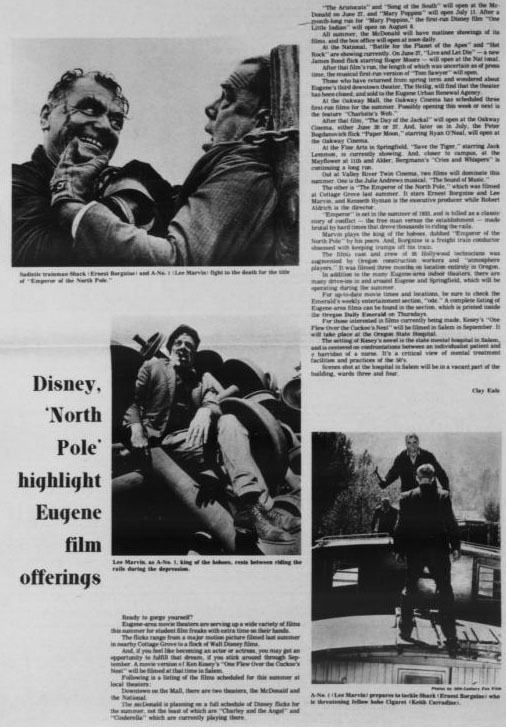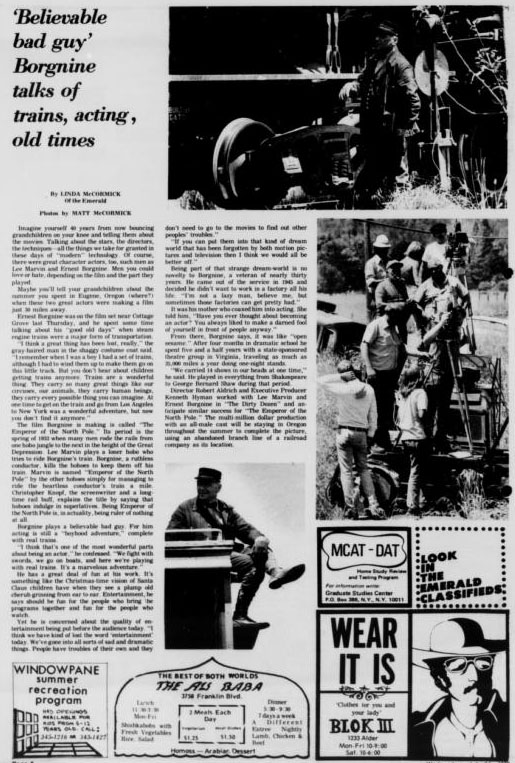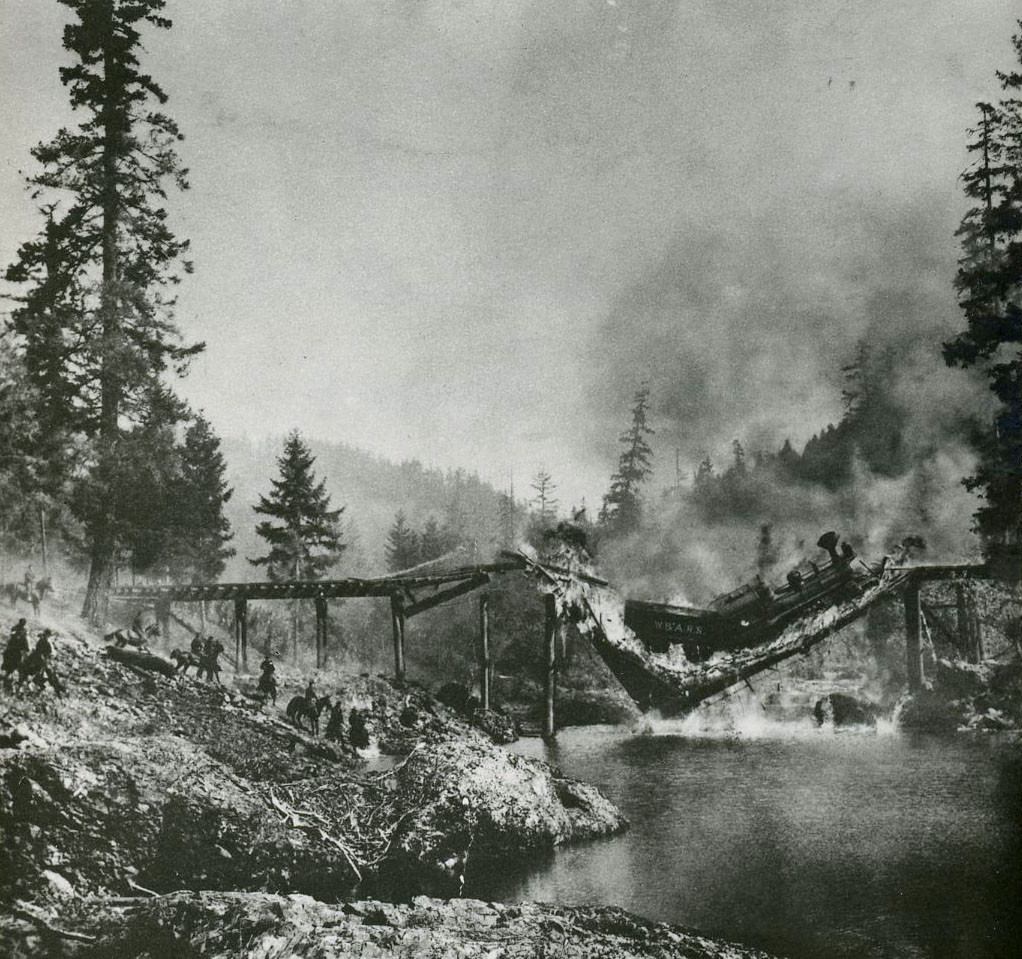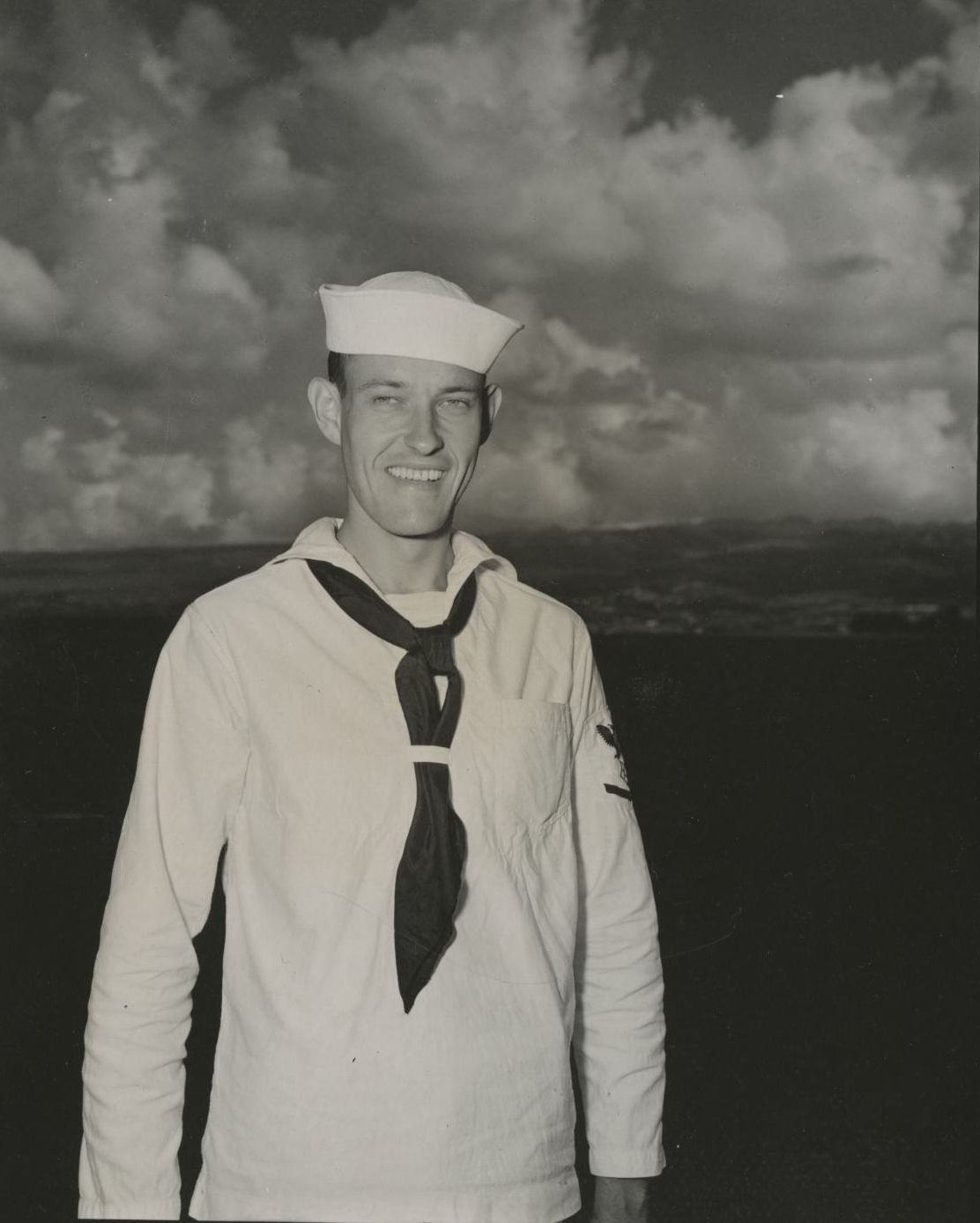Forty-six years after a Hollywood production company spent the summer in Cottage Grove, Oregon, filming Buster Keaton’s classic The General, another production company arrived to make another railroad-themed film, Emperor of the North. The 1973 film tells the story of A No. 1, a hobo in the Great Depression played by Lee Marvin, who battles a sadistic conductor, Shack, played by Ernest Borgnine, in an attempt to be the first hobo to ride his train from Southern Oregon all the way to Portland. Keith Carradine plays Cigaret, a youthful hobo who also makes the journey but comes up short of the goal.
The screenplay, written by the Hollywood veteran Christopher Knopf, was inspired by early twentieth century books written about displaced, itinerant laborers, colloquially referred to as “hobos,” who rode the rails without paying. The film’s main protagonist was modeled on Leon Ray Livingston, who authored twelve books with the pen name (and hobo moniker) A No. 1. In his The Ways of the Hobo, Livingston writes about his attempt to win a bet by riding a train that had never been successfully ridden by a hobo without being caught. Another book that inspired the screenplay was Jack London’s The Road about London’s coast to coast trip as a hobo riding the rails at the age of eighteen. Scenes in the movie where Shack uses a coupling pin on a rope to injure and dislodge A No. 1 and Cigaret riding underneath a boxcar were adapted from London’s book.
Knopf’s screenplay was originally owned by Paramount, who announced in 1969 that they would produce the film. But in 1971, Stanley Hough of 20th Century Fox acquired the rights. Robert Aldrich was the third director to take on the project after Martin Ritt was let go and Sam Peckinpah failed to come to terms with the producers. The film reunited the team of executive producer Kenneth Hyman and director Aldrich, with actors Marvin and Borgnine, who created the highly successful Dirty Dozen in 1967.
Emperor of the North was the tenth film made in Oregon since Governor Tom McCall established the Governor’s Office of Film and Television in 1968. The $3.5 million production was originally going to be shot in Mexico, but an invitation to Fox executives to visit Oregon in January 1972 convinced them to use the private Oregon Pacific and Eastern railroad line east of Cottage Grove, along with train station buildings and rolling stock to make the film. The production company also filmed a scene at the Buxton trestle near the small community of Buxton in Washington County.
Filming began on July 11, 1972, at the Buxton trestle and then moved to Cottage Grove where the 100-person cast and crew stayed at the Village Green resort. Most of the filming took place on the same eighteen miles of track used by The General film crew, which paralleled the Row River east of Cottage Grove. Some of the final scenes were filmed along Dorena Lake. Much of the movie involves the hobos’ attempts to board and re-board the No. 19 train, and the conductor, Shack’s, violent efforts to remove them. The final scene in the film is an epic, bloody clash between A No. 1 and Shack on a moving platform car involving chains and an axe. The fight ends badly for Shack, and then for Cigaret, when they are both thrown from the train by A No. 1 as the train heads into Portland.
Filming was completed on October 5, 1972. Producer Hough told the Oregon Journal, “We’ve got it all together now… now comes the final editing. Those Oregon backgrounds are great!” The film premiered in New York City on May 23, 1973, to mixed reviews. Vincent Canby in the New York Times praised the film, calling it a “fine, elaborately staged action melodrama.” The all-male cast and violence may have had less appeal for critics like Judith Crist who called it “hard, contrived, pointless in its thesis, repulsive in its people.” The movie premiered on June 29, 1973, in Portland, Salem, and Eugene.
After the initial screenings to unenthusiastic audiences, the executives at Fox changed the name of the film from The Emperor of the North Pole to just Emperor of the North. The former title came from actual hobo lore in reference to a term used to praise a hobo, but in an ironic way, since an emperor of the North Pole would rule over a snowy wasteland. The new title had no connection to hobos, but at least, the executives felt, audiences would not think they were going to a Christmas movie or a movie about Arctic exploration.
Changing the title did not prevent the film from failing at the box office. Years later, Aldrich said he’ll “never understand” why. He thought he was making the kind of anti-Establishment film that would connect with enthusiastic audiences in 1973. “I never thought people wouldn’t root for the Marvin character,” he said. “I thought everyone would say ‘I understand what Marvin is. He’s trying not to be regimented and suppressed, and denied his rights, and I’m for him.’ And nobody was. It just didn’t happen. Nobody cared.”
-
![]()
Emperor of the North film poster, 1973.
Courtesy 20th Century Fox
-
![]()
Oregon Daily Emerald newspaper article about Emperor of the North film, June 18, 1973.
Courtesy Oregon Daily Emerald (Eugene, Or.) Historic Oregon Newspapers, University of Oregon -
![]()
Oregon Daily Emerald article about Emperor of the North film, July 26, 1972.
Courtesy Oregon Daily Emerald (Eugene, Or.) Historic Oregon Newspapers, University of Oregon
Related Entries
-
![Animal House (film)]()
Animal House (film)
National Lampoon’s Animal House, one of the most successful American fi…
-
![One Flew Over The Cuckoo's Nest (film)]()
One Flew Over The Cuckoo's Nest (film)
One Flew Over the Cuckoo’s Nest, a film based on the 1962 book by Orego…
-
![Oregon and the Film Industry]()
Oregon and the Film Industry
Early Filmmaking in Oregon Motion pictures debuted in Oregon in 1894 w…
-
![Stand By Me (film)]()
Stand By Me (film)
Stand By Me, a classic of 1980s American cinema, was filmed mostly in a…
-
![The General (film)]()
The General (film)
Buster Keaton's masterpiece and one of the greatest silent movies of al…
-
![Thomas William Lawson McCall (1913-1983)]()
Thomas William Lawson McCall (1913-1983)
Tom McCall, more than any leader of his era, shaped the identity of mod…
Map This on the Oregon History WayFinder
The Oregon History Wayfinder is an interactive map that identifies significant places, people, and events in Oregon history.
Further Reading
Epstein, Dwayne. Lee Marvin: Point Blank. Tucson, AZ: Schaffner Press, 2013.
Serafino, Jay. “Leon Ray Livingston, America’s Most Famous Hobo.” Mental Floss, January 17, 2018.
A-No 1. The Ways of the Hobo. New Orelans, LA: Garrett County Press, 2012.
Silver, Alain, and James Ursini. What Ever Happened to Robert Aldrich?: His Life and His Films. Brisbane, AUS: Limelight Publishing, 1995.
Marks, Arnold. “Arnold Marks’ Entertainment.” Oregon Journal, September 27, 1972, p. 9.
Mahar, Ted. “Panel Lures Moviemakers to Oregon.” Sunday Oregonian, July 23, 1972.
Marks, Arnold. “Giant Film Studios May Be Oregon’s Biggest Boosters.” Oregon Journal, December 2, 1972, p. 23.
Marks, Arnold. “‘Emperor’ Actors Set for Big Movie Battle.” Oregon Journal, September 4, 1972, p. 7.
Canby, Vincent. “The Screen: ‘Emperor of the North Pole’ Arrives.” New York Times, May 25, 1973.









